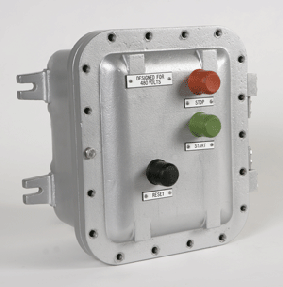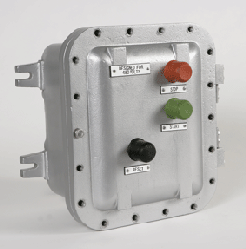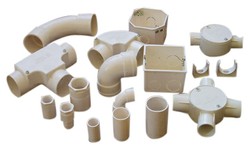Buying electrical boxes is not easy as you have to take into account various parameters like material, shape and dimension of the box, where and how you are going to install the box and how will you cover it. If you are about to source electrical boxes and finding yourself lacking in knowledge, this article can be of help as it explains everything essential about electrical boxes to help you make the right selection.

A Comprehensive Insight into the World of Electrical Boxes
by jesonpitt
Electrical boxes systematically encase the wires which may be connecting applications like switches, electrical fixtures etc to main power source.
About Electrical Boxes
Electrical boxes systematically encase the wires which may be connecting applications like switches, electrical fixtures etc to main power source. Boxes come in a diverse range for addressing differing needs of internal, external, wall mounted and application oriented wires.
Other Uses of Electrical Boxes are:

(a) Streamlining periodic maintenance and up-gradation activities of electrical components by easing access to them.
(b) Substantially reduce chance of fiery incidents and short circuits by adequately grounding electricity conducting wires.
The nature of explosion proof electrical boxes and corresponding installation procedures for dedicated applications are governed by The National Electrical Code and regional building regulations. The code cautions against covering the boxes with paneling, drywall or other wall embellishments. A uniformity of cover design is to be implemented across all boxes. The code stipulations and requisite permits can be learnt from local building inspector. After setting up electrical connections through boxes, it is advisable to get the same inspected to focus on compliance and safety discrepancies.
The important considerations that have to be counted in before purchasing appropriate electrical boxes are:
Electrical Box Types
Handy Box: Ideal for accommodating light receptacles and switches, this wall surface mounted box comes handy in areas where installation beneath the wall is tough.
Junction Box: It facilitates interconnection of wires allowing for safe splitting of circuits and ramification in various directions.
New-work Box: Such boxes get installed during preliminary work of a new construction. Stud or joist mounted, the box is sometimes fitted in midst of studs with a bar hanger prior to applying drywall.
Old-work Box: Such boxes are installed post drywall application and offers extra electrical outlets. Clamps inherent in the box enable hanging on the drywall.
Outdoor Box: The boxes com in metallic and non-metallic units and provide protection to wires from hostile weather conditions through sealed seams, watertight covers and gaskets.
Box Material

Electrical box is built of metals like cast iron and aluminum or non-metals like plastic or electrical PVC materials. Metal boxes last long and ensure consistent performance even under adverse conditions. They are to be utilized for exposed indoor applications like conduits, in areas where construction is in progress.
PVC or plastic box is relatively less costly and provide for hassle free installation in both new and old work situations. Such boxes should be exclusively used with non-metallic wiring.
Box Dimensions
The box best suited to your needs should be scanned thoroughly based on required shape and size.
Standard rectangular box is used for encasing single electrical outlet or switch. Square box is used for accommodating 2 devices, i.e. outlet and switch combined or a pair of either of them. Octagonal box is deployed for enclosing lightweight fixtures or ceiling fitted smoke alarms or varied detectors. Ceiling box is built for holding heavier fixtures like chandeliers and fans.
Box Features
Box Cover: Interior electrical box cover has to be simple or can don decorations to add glamour to home décor. Exterior covers should be watertight. In-use cover should be used for outlets that provides for complete coverage even in the event of a device being plugged in. Junction box cover is plain and serves the dual purpose of concealing the wiring and allowing easy access.
Braces and bar hangers: They are attached in midst of joists to allow for positioning of electrical devices in multiple locations. They allow ease of positioning with minimum damage to ceiling.
Extension rings: They are used to deepen the electrical box adding extra space to hold additional wires.
Adjustable depth boxes: They facilitate the electrical box to sit flush with wall surface irrespective of wall material’s inherent depth.
Some Important Installation Tips
(a) Installation of electrical boxes in new construction should essentially start with mapping the room to allow for sufficient number of boxes to hold all fixtures and devices.
(b) A stud finder is to be deployed for stud location in finished regions. Adequate steps should be taken to prevent them from impeding new box placement.
(c) Rough box outline should be traced on the wall to facilitate marking cutting lines. For drywall, use utility knives; for plaster, use keyhole saws and for wood, use saber saws.
(d) A minimal distance of 42 inches from the floor is to be maintained for light switch installation; whereas for power outlets, the gap should be 12 inches.
(e) The entire array of wires should be properly labeled for allowing future changes.
You might also like
The Use of Electrical Conduit Fittings and Other Electrical Pr...Electrical Products
Planning for Grad SchoolHow to search for the best academic institution re your professional goals an...
How to Write Publishable Academic ArticlesGetting academic articles published is not an easy task. I give you the basic...



 The Use of Electrical Conduit Fittings and Other Electrical Productson 09/23/2011
The Use of Electrical Conduit Fittings and Other Electrical Productson 09/23/2011



Comments
Would I need an electrician to install this or could I do it myself?